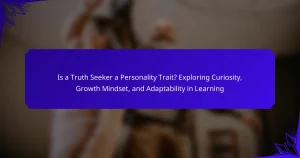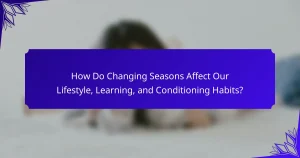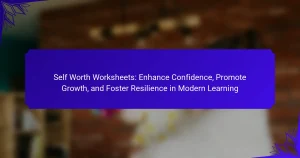Understanding how Intuition and Sensing influence learning styles is crucial for modern education. Intuition fosters creativity and abstract thinking, while Sensing emphasizes practical skills and concrete details. This article explores how these styles can be integrated into teaching methods, enhancing engagement and retention. It also examines the impact of these approaches on conditioning techniques, tailoring education to diverse learner preferences.
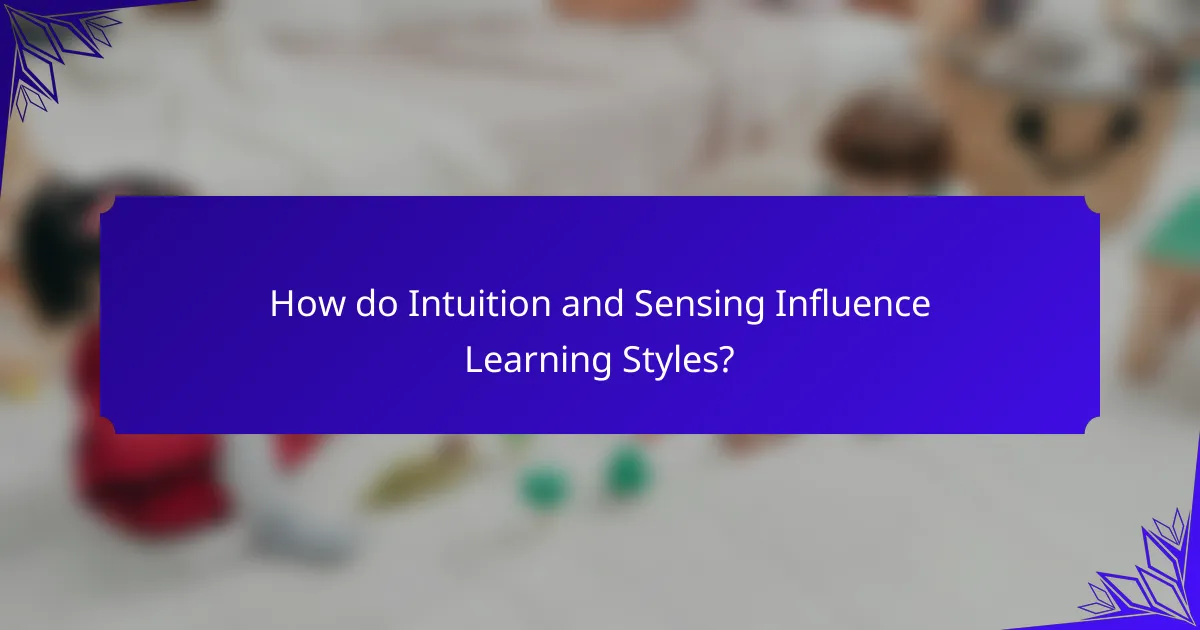
How do Intuition and Sensing Influence Learning Styles?
Intuition and Sensing significantly influence learning styles by shaping how individuals process information. Intuitive learners prefer abstract concepts and patterns, while Sensing learners focus on concrete facts and details.
Intuition encourages exploration of ideas, fostering creativity and critical thinking. This style benefits from discussions, brainstorming sessions, and theoretical frameworks. In contrast, Sensing enhances practical skills through hands-on experiences, emphasizing real-world applications and structured learning environments.
Understanding these differences aids educators in tailoring their teaching methods. For instance, integrating both styles in lesson plans can engage a broader range of students. This dual approach promotes a balanced learning experience, accommodating diverse preferences and enhancing overall educational outcomes.
What are the key characteristics of Intuition in learning?
Intuition in learning is characterized by a deep understanding, quick decision-making, and reliance on instinct. It enhances learning by fostering creativity and enabling learners to make connections between concepts. Intuitive learners often excel in environments that encourage exploration and self-directed study. They benefit from experiential learning techniques, which allow them to engage with material in a meaningful way.
What are the key characteristics of Sensing in learning?
Sensing in learning is characterized by a focus on concrete information, practical applications, and sensory experiences. Sensing learners prefer details and facts, valuing step-by-step processes. They often excel in hands-on activities, benefiting from structured environments. Additionally, they tend to be more cautious in their approach, favoring tried-and-true methods over abstract theories. This style contrasts with intuition, which emphasizes possibilities and abstract concepts.
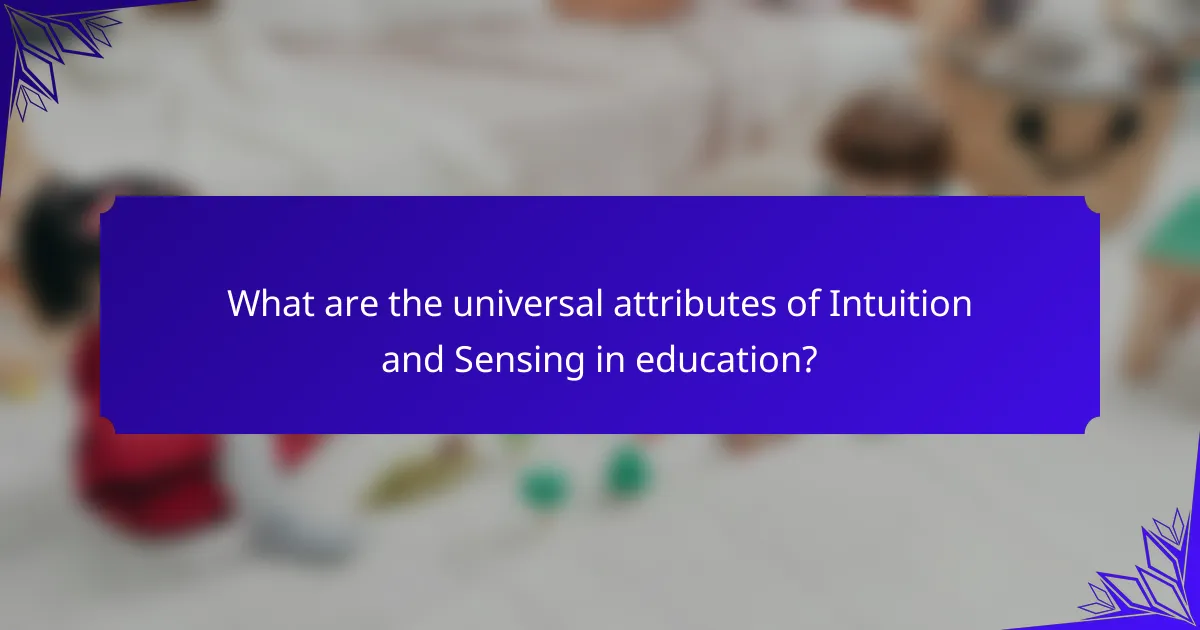
What are the universal attributes of Intuition and Sensing in education?
Intuition and Sensing in education exhibit distinct attributes that enhance learning styles. Intuition focuses on abstract concepts and future possibilities, while Sensing emphasizes concrete facts and present realities.
Intuitive learners thrive on creativity and innovation, often preferring big-picture thinking and theoretical frameworks. In contrast, Sensing learners excel with hands-on experiences and detailed information, favoring structured environments and practical applications.
Both styles contribute to effective educational strategies. Integrating Intuition encourages exploration and critical thinking, while incorporating Sensing reinforces comprehension through tangible examples. Understanding these attributes allows educators to tailor their approaches, catering to diverse learning preferences.
How do Intuition and Sensing affect information processing?
Intuition enhances information processing through holistic understanding, while Sensing focuses on concrete details. Intuitive learners grasp concepts quickly, making connections across ideas. Sensing learners excel in practical application, benefiting from structured information. Recognizing these differences can optimize educational strategies.
What are the common learning preferences associated with Intuition and Sensing?
Intuitive learners prefer abstract concepts and big-picture thinking, while Sensing learners focus on concrete details and practical applications. Intuition often leads to innovative ideas, whereas Sensing emphasizes data-driven approaches. Intuitive learners thrive in open-ended environments, while Sensing learners benefit from structured settings. These preferences shape teaching methods, with intuitive learners engaging in discussions and Sensing learners favoring hands-on activities.
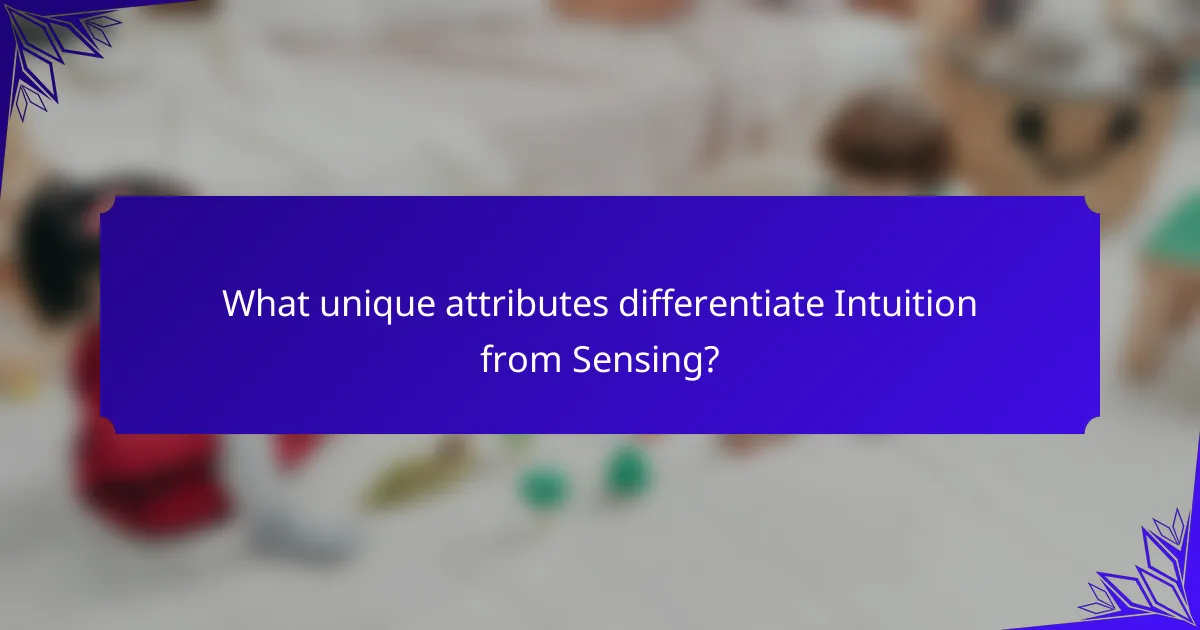
What unique attributes differentiate Intuition from Sensing?
Intuition is characterized by abstract thinking and future-oriented insights, while Sensing focuses on concrete details and present realities. Unique attributes of Intuition include a propensity for pattern recognition and imaginative problem-solving. In contrast, Sensing emphasizes practicality and reliance on tangible data. These differences enhance learning styles by catering to diverse cognitive approaches in modern education.
How do Intuitive learners approach problem-solving?
Intuitive learners approach problem-solving by relying on their instincts and insights. They prioritize holistic understanding over detailed analysis. This group often identifies patterns and connections quickly, leading to innovative solutions. They may prefer brainstorming sessions and collaborative discussions to explore ideas freely.
What strategies do Sensing learners use to retain information?
Sensing learners use practical strategies to retain information, including hands-on experiences, real-world applications, and structured environments. They benefit from visual aids, such as diagrams and charts, which help them organize and process information effectively. Group discussions and collaborative learning also enhance their retention by allowing them to engage directly with the material. Consistent repetition and practice solidify their understanding, making information more memorable.
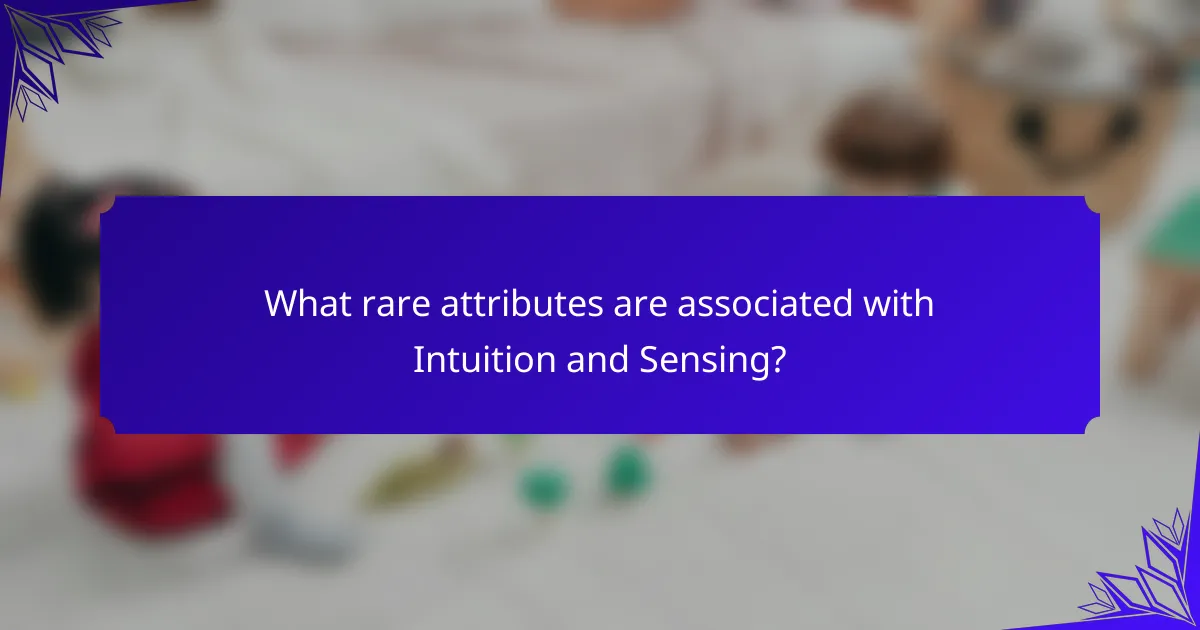
What rare attributes are associated with Intuition and Sensing?
Intuition and Sensing possess rare attributes that enhance learning styles. Intuition often involves abstract thinking and pattern recognition, while Sensing emphasizes concrete details and sensory experiences. This distinction can lead to unique educational approaches tailored to individual preferences. For instance, intuitive learners may thrive in environments that encourage creativity and exploration, whereas Sensing learners benefit from structured, hands-on activities. Understanding these rare attributes can significantly improve teaching methodologies in modern education.
How can Intuition lead to innovative thinking in educational settings?
Intuition fosters innovative thinking in educational settings by encouraging creativity and personalized learning approaches. It allows educators and students to make connections that traditional methods may overlook. Intuitive insights can lead to unique problem-solving strategies, enhancing engagement and motivation in the classroom. Additionally, integrating intuition with Sensing techniques can create a balanced learning environment, accommodating diverse learning styles. This synergy promotes adaptability and critical thinking, essential for modern education.
What challenges do Sensing learners face in modern classrooms?
Sensing learners face challenges such as difficulty in abstract thinking, preference for concrete examples, and struggles with theoretical concepts. These learners often require hands-on experiences to grasp material effectively. As a result, traditional teaching methods may not engage them fully, leading to frustration and disengagement. Additionally, Sensing learners may find it hard to adapt to rapid technological changes in modern classrooms, which often emphasize digital and abstract learning tools.
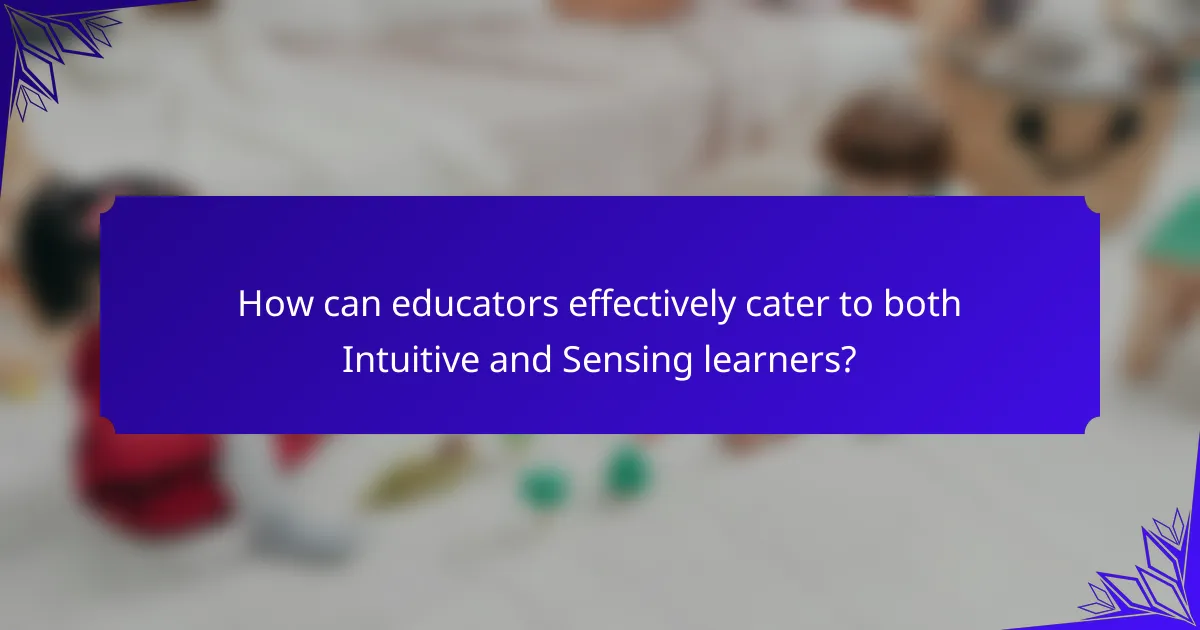
How can educators effectively cater to both Intuitive and Sensing learners?
Educators can effectively cater to both Intuitive and Sensing learners by employing diverse teaching strategies. Intuitive learners thrive on abstract concepts and big-picture thinking, while Sensing learners prefer concrete facts and hands-on experiences.
To engage Intuitive learners, educators should incorporate discussions that encourage exploration of theories and ideas. Using project-based learning can stimulate their curiosity and creativity. For Sensing learners, practical applications of knowledge through demonstrations and real-world examples are essential.
Additionally, blending these approaches can create a balanced learning environment. For instance, educators might introduce a concept through a theoretical framework and then follow up with practical exercises. This dual strategy accommodates both learning styles, enhancing comprehension and retention.
Finally, continuous assessment and feedback help tailor instruction to meet the evolving needs of both learner types, ensuring that all students feel valued and engaged.
What practical techniques enhance learning for Intuitive students?
Intuitive students benefit from techniques that engage their creativity and abstract thinking. Practical methods include project-based learning, which fosters exploration and innovation, and mind mapping, which visualizes connections between concepts. Additionally, incorporating storytelling can enhance retention and understanding by linking new information to relatable narratives. Collaborative learning environments encourage discussion and idea exchange, further enriching the learning experience for intuitive learners.
What practical techniques enhance learning for Sensing students?
Practical techniques that enhance learning for Sensing students include hands-on activities, visual aids, and real-world applications. These methods cater to their preference for concrete information and experiential learning.
Using tactile materials, such as models or manipulatives, allows Sensing students to engage directly with the subject matter. Incorporating diagrams and charts helps them visualize concepts, making learning more effective. Additionally, connecting lessons to everyday experiences reinforces their understanding and retention of information.
Incorporating collaborative projects can also benefit Sensing students. Group work encourages interaction and allows them to learn from peers while applying their skills in practical scenarios.
Lastly, providing immediate feedback during tasks helps Sensing students track their progress and adjust their strategies, leading to enhanced learning outcomes.
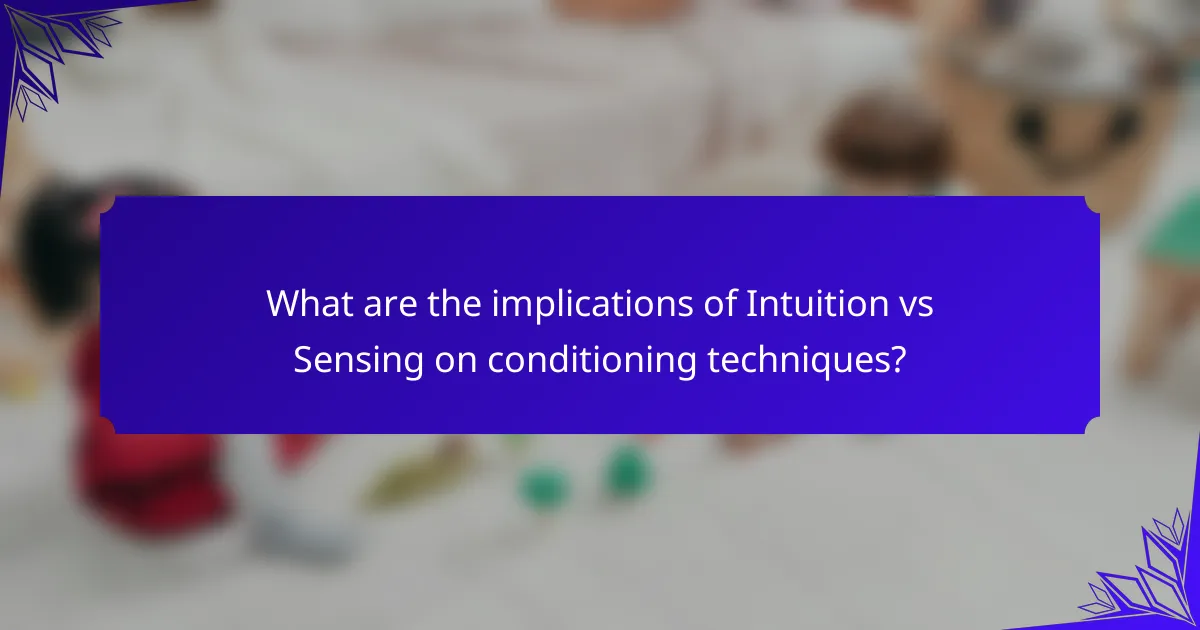
What are the implications of Intuition vs Sensing on conditioning techniques?
Intuition and Sensing significantly impact conditioning techniques by influencing how learners absorb and process information. Intuitive learners prefer abstract concepts and patterns, while Sensing learners focus on concrete details and practical applications. This distinction shapes the effectiveness of various conditioning strategies. For example, intuitive learners may benefit from holistic approaches that encourage exploration and creativity, whereas Sensing learners thrive with structured, step-by-step methods that emphasize clarity and direct experience. Understanding these implications allows educators to tailor their techniques, enhancing engagement and retention across diverse learning styles.
How can conditioning techniques be tailored to learning styles?
Conditioning techniques can be tailored to learning styles by aligning methods with individual preferences. Intuitive learners benefit from abstract concepts and big-picture thinking, while Sensing learners thrive on concrete details and practical applications.
To enhance engagement, educators can incorporate varied conditioning techniques. For intuitive learners, techniques like brainstorming and creative problem-solving foster exploration. For Sensing learners, hands-on activities and structured guidance improve retention.
Understanding these distinctions allows for personalized learning experiences. Tailoring conditioning techniques to these styles maximizes effectiveness, ensuring that both intuitive and Sensing learners achieve their educational goals.
What role does feedback play in reinforcing learning styles?
Feedback is crucial in reinforcing learning styles by providing learners with insights into their performance. It enhances Intuition and Sensing methods, allowing students to adapt their strategies effectively. Constructive feedback fosters self-awareness, enabling learners to identify strengths and areas for improvement. This process ultimately leads to better retention and understanding of material, as students can tailor their learning approaches based on specific feedback received.
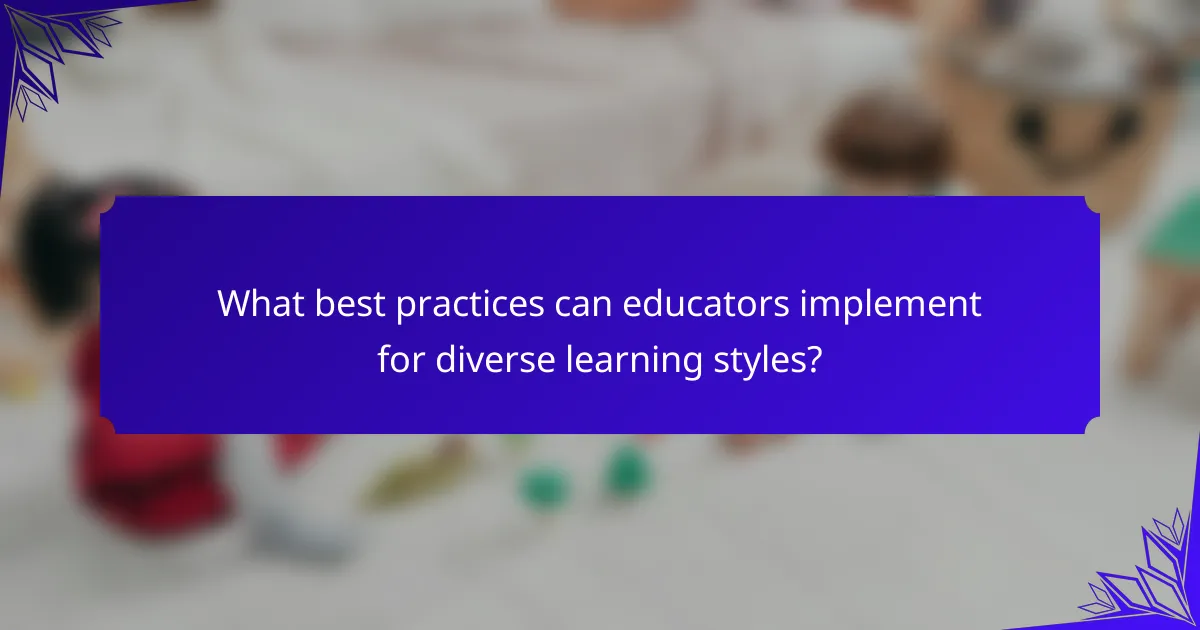
What best practices can educators implement for diverse learning styles?
Educators can enhance diverse learning styles by incorporating both Intuition and Sensing techniques. Tailoring lessons to include hands-on activities, visual aids, and collaborative projects addresses various preferences. For example, using real-world scenarios engages Intuitive learners, while structured information supports Sensing learners. Regular assessments can help refine these approaches, ensuring they meet students’ evolving needs.
What common mistakes should be avoided when addressing different learning styles?
To effectively address different learning styles, avoid generalizing learners and neglecting individual preferences. Recognize that Intuition and Sensing represent distinct approaches to information processing. Misunderstanding these can lead to ineffective teaching strategies. Failing to incorporate varied instructional techniques may alienate students. Ensure that lessons cater to both Intuitive and Sensing learners by blending abstract concepts with concrete examples.
How can educators optimize their teaching methods for Intuition and Sensing learners?
Educators can optimize teaching methods for Intuition and Sensing learners by tailoring approaches to their distinct learning preferences. Intuition learners thrive on abstract concepts and big-picture thinking, while Sensing learners prefer concrete information and practical applications.
To cater to Intuition learners, educators should incorporate discussions, brainstorming sessions, and project-based learning that encourage creativity and exploration of ideas. In contrast, for Sensing learners, providing hands-on activities, real-life examples, and structured lessons with clear objectives can enhance understanding.
Additionally, using varied assessment methods can address both styles effectively. Intuition learners may benefit from open-ended projects, while Sensing learners might excel with quizzes and practical tests. Balancing these techniques fosters a comprehensive learning environment that supports diverse learning styles.
